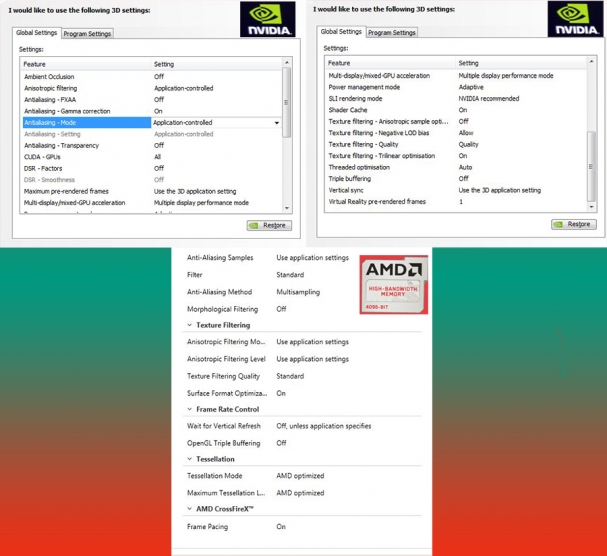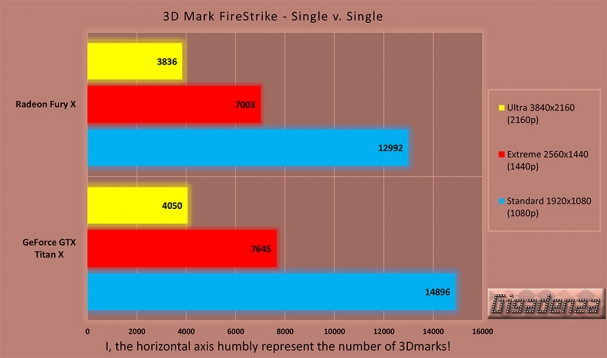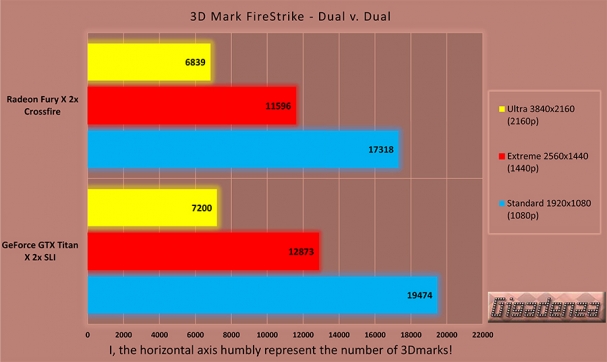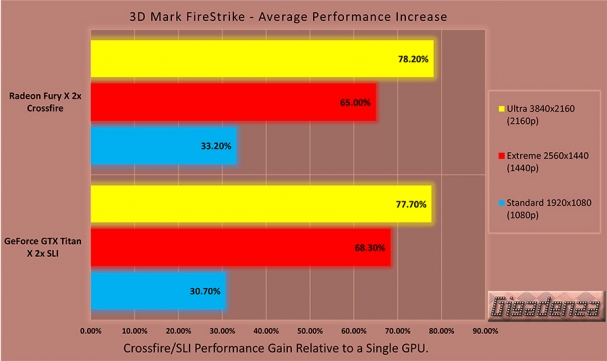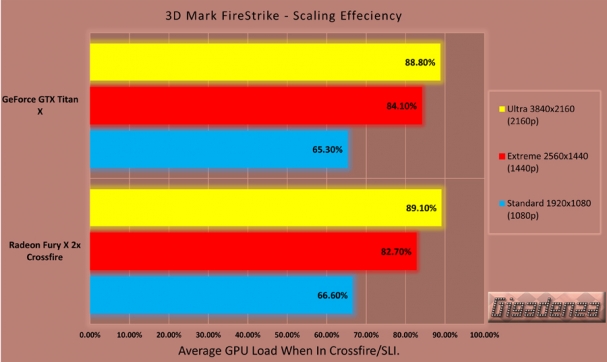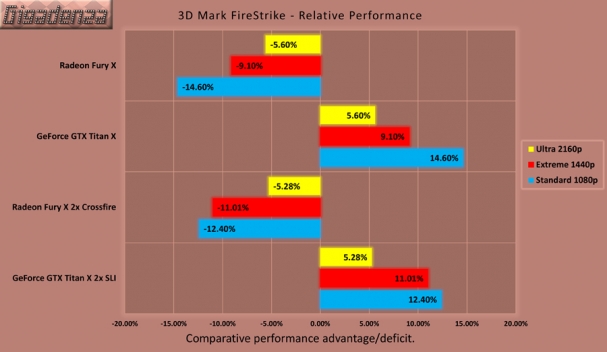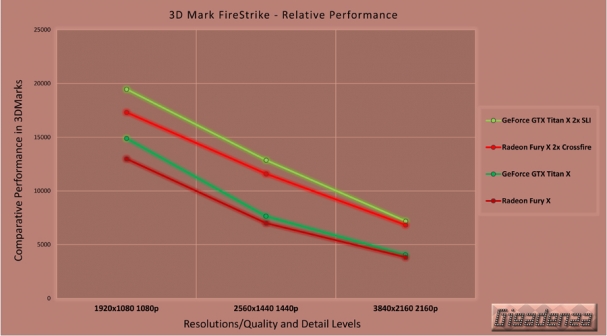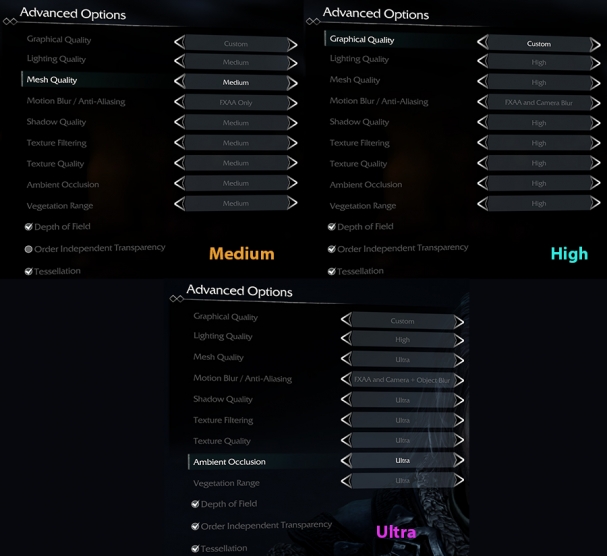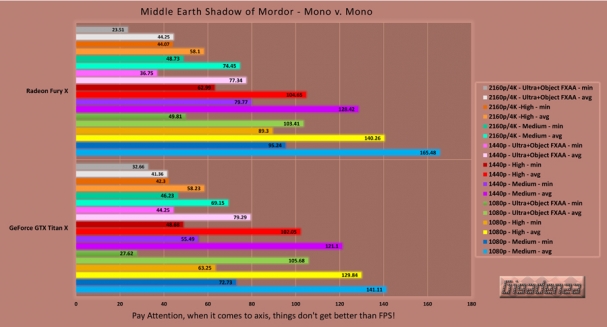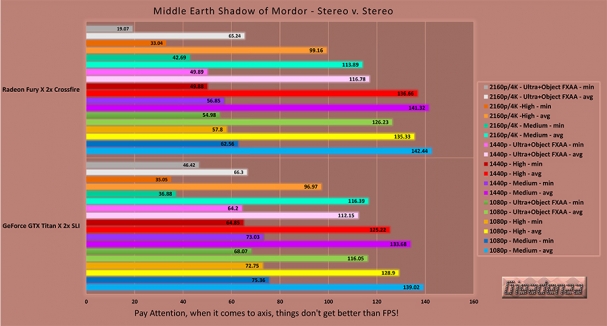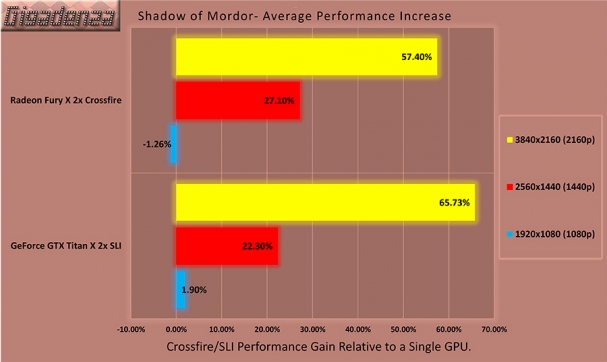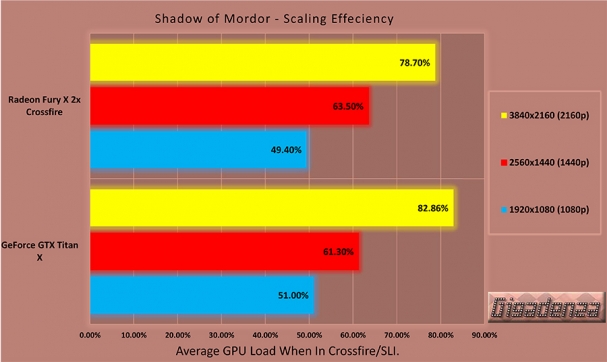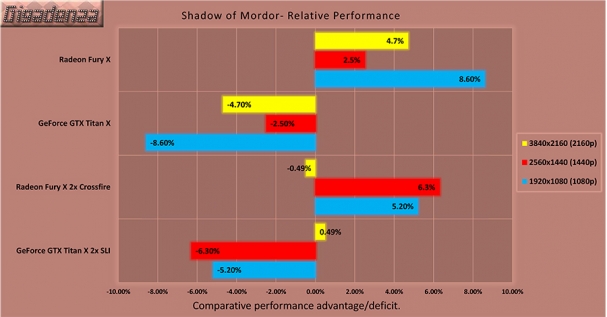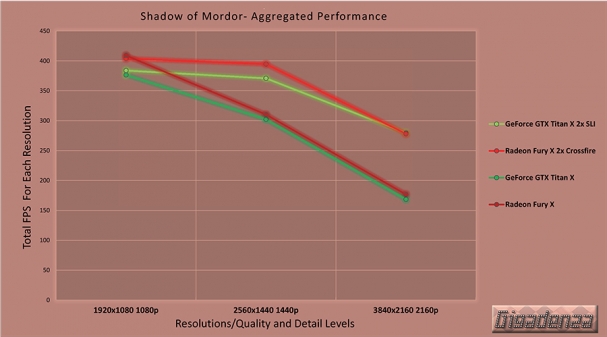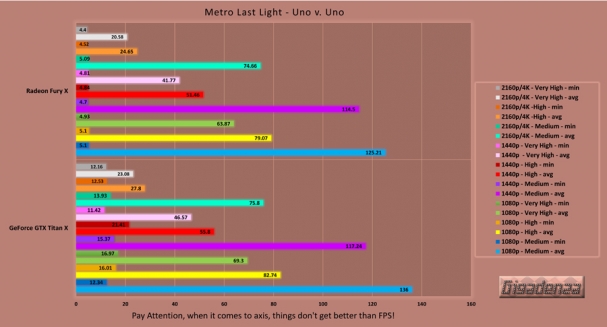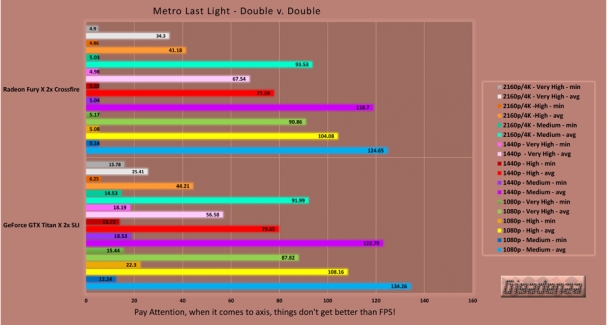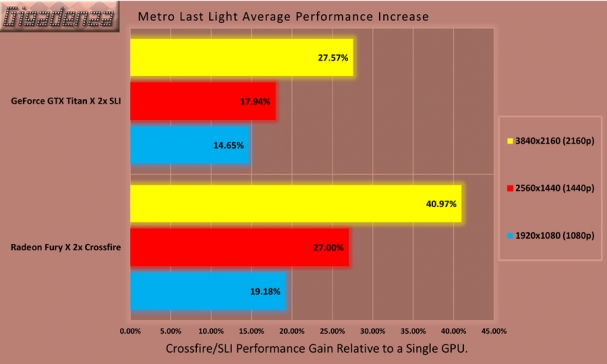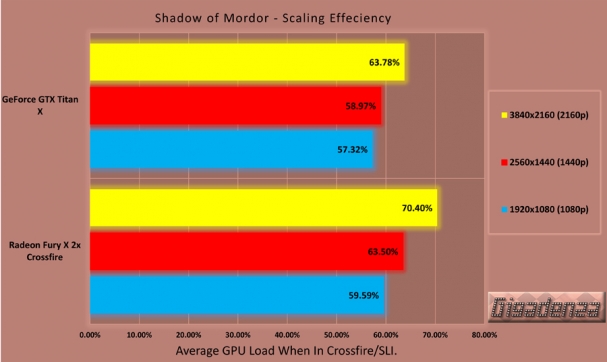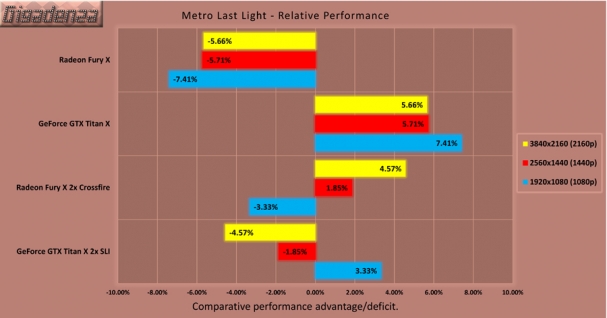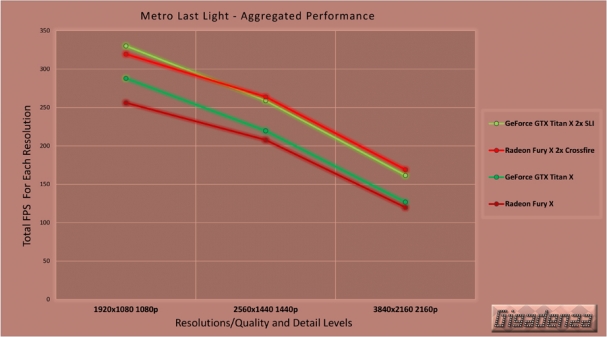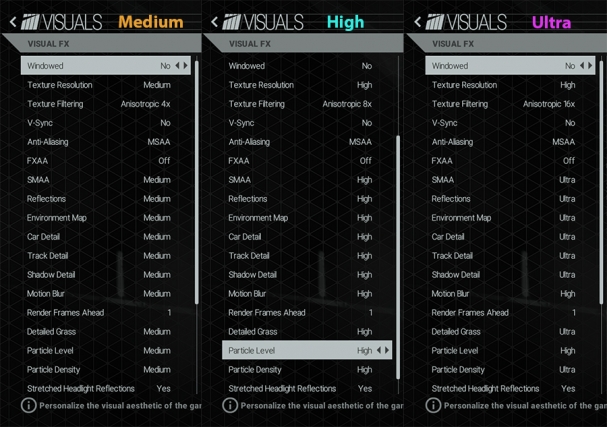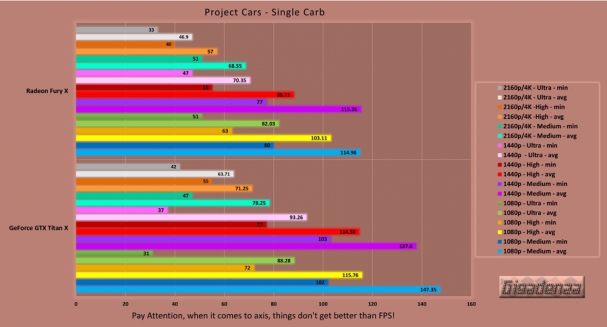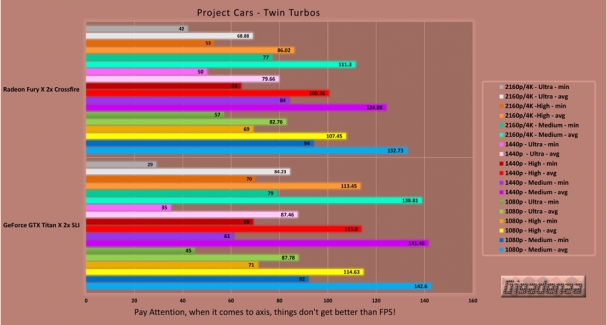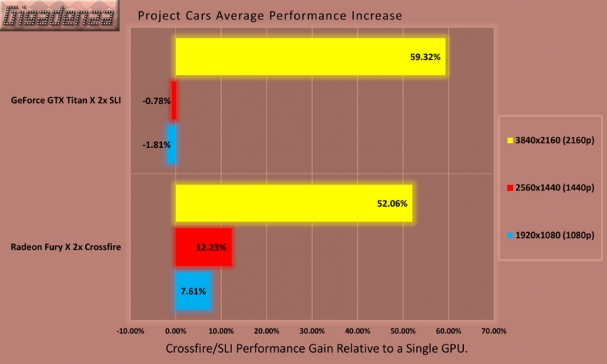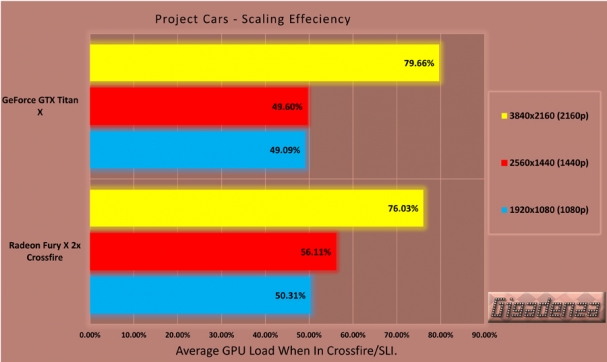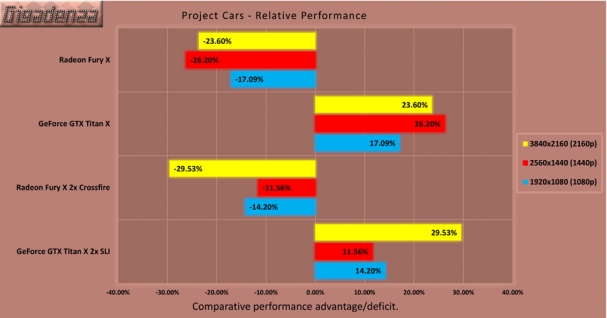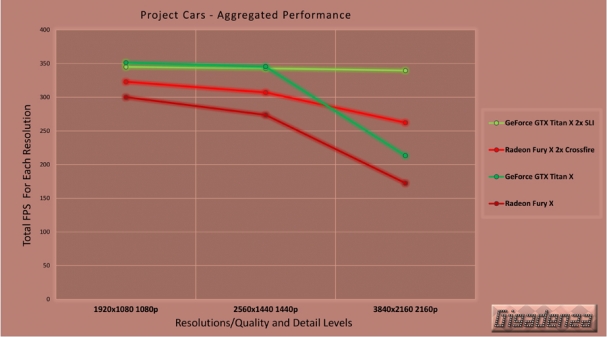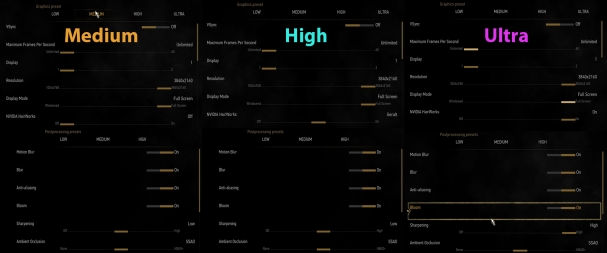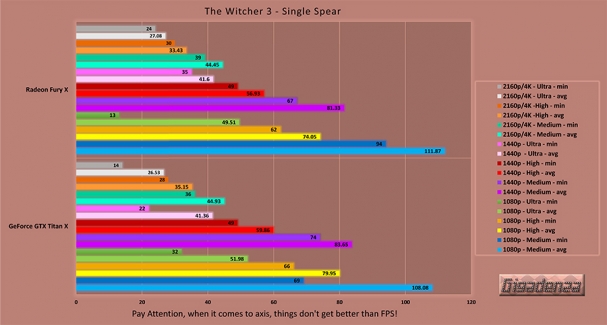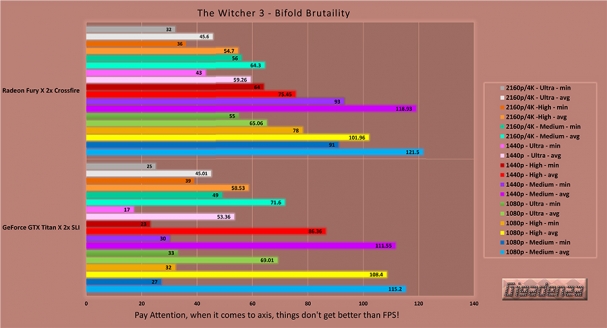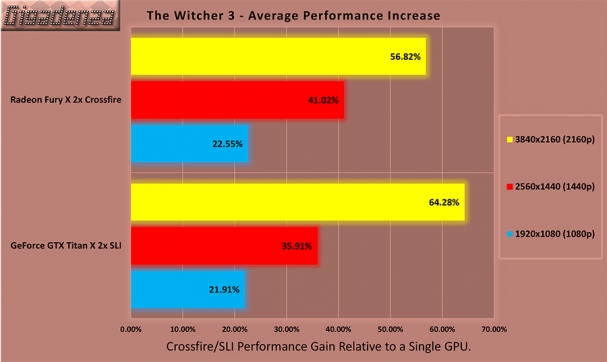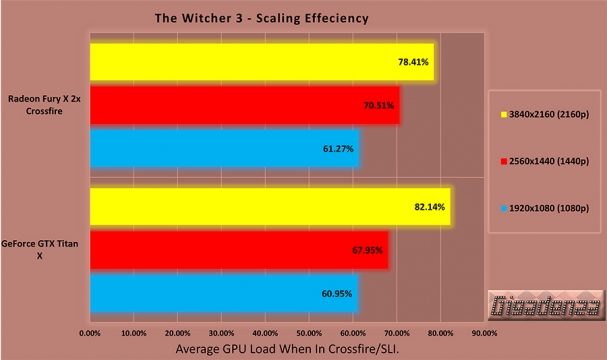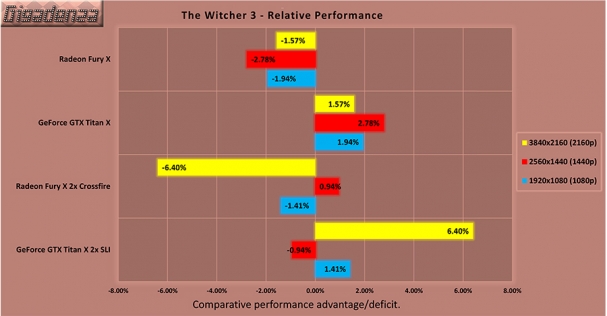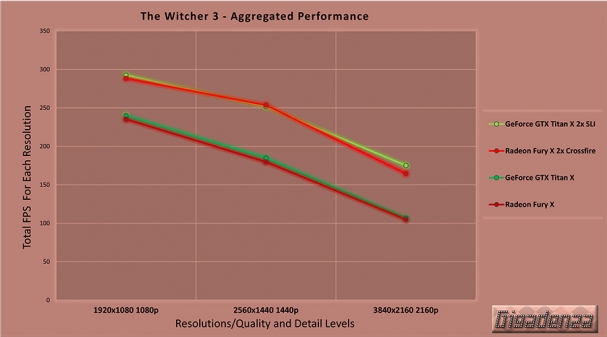An “X” Rated Rumble.
The Obligatory Preamble
My initial intention for the analysis you are about to assimilate had been to stick with the proven strategy of specifying several quality based templates for each tested resolution via a combination of settings applied in the video cards’ control panels and preferences available in individual games.
However, it quickly became evident that the majority of titles I had chosen were more closely aligned than ever with the hardware they were utilizing and that the drivers underpinning both products provided proprietary methods for edge blending, filtering and tessellation which if employed, might well have yielded misleading results.
Upon reflection, I decided it was far wiser to leave all variables on their defaults and appoint the profiles solely from within the applications.
Here is how the control panels were set.
The three resolutions under review were 1080p, 1440p and 2160p (4K). The first the present gold standard, the second, an increasingly popular compromise and the third, an enthusiast’s dream that is every GPU’s mission to realise. Some might scoff at my decision to run anything under 4k due the CPU inevitably impeding proceedings. To them I would suggest that irrespective of frame size, there are circumstances when seemingly fathomless graphical horsepower can evaporate faster than a shopaholic’s pension once offset against a sumptuous sprinkling of sugary optics!
To demonstrate as such, I’ve devised three additional pre-sets for the selected resolutions calibrated to “medium” “high” and “ultra” levels of detail, forgoing a fourth iteration for “low” on the assumption that any armchair assassin who amasses over 500 gold pieces to acquire superior speed would only do so to annihilate their adversaries in razor sharp clarity.
For further reference, I have included a series of screen captures illustrating the profiles compiled for each game, which differ according to fanciful terminology and the variety of adjustable values. Sometimes “ultra” is defined as “very high”, “extreme” as “maximum”, “insane” as “certifiable” and so on. On other occasions, there may be no options to activate anti-aliasing, enhance motion blur, refine reflections, engage exotic lighting effects, toggle temporal termites, disable dynamic brown dwarfs or initialize anisotropic aardvarks.
Test System.
- Motherboard – Asus Rampage Gene IV
- CPU – Core i7 Sandy Bridge-E 3970x at stock 3.5 with Turbo Boost
- Memory – 4x4GB Crucial 1333mhz RAM 9-9-9-27
- Hard Drive – 1x 500gb WD Black (OS Drive). 2x 256GB Samsung PM800 in Raid 0 (game drive).
- Creative Soundblaster X7 “White” edition. (I mistyped the “W” with an S!).
- PSU – Corsair AX860i Digital (860 watts 71 amps on the 12v rail).
- 2x AMD R9 Fury X (Powercolor brand) with singing pumps.
- 2x Geforce GTX Titan X (Zotac brand) with whispering fans.
–~~~~~~~~~~~~–
3DMark 2013
A Turtle clambers languidly out of a sparkling mountain stream while a butterfly frolics amidst nearby foliage. A clan of heavily armoured soldiers crouch nervously behind banks of freight, preparing to defend their mighty space station from a satanic invasion of impregnable exo-suites and grizzly Gatling guns.
A pair of playful Will-o’-the-wisps wander through the gnarled faces of forest pines as wayward fireflies look on. A leviathan leaps from the ocean in one final, desperate bid to devour a sky bound clipper and her fearless captain. If any of these scenes sounds familiar, you are a certified 3dmark veteran.
3DMark Firestrike- Dual R9 Fury X Vs. Dual Titan X.
Get the Flash Player to see this player.
Futuremark’s crippling Firestrike demo comprised part of the company’s 2013 benchmark suite and rapidly evolved into byword throughout a voracious fraternity of elite over clockers. In keeping with the sadistic, yet thoroughly respected tradition of reducing ninja PCs to quivering mounds of render weary silicon, the test used a succession of intricately detailed graphical sequences to simulate workloads induced by the most consumptive games of the era.
Both the Fury and the Titan acquitted themselves admirably with the NVidia’s Cuda crunching colossus creeping ahead of its hydro-assisted foe in every iteration, though even when partnered up, these staggeringly powerful GPU’s were roundly ravaged by the “ultra” tests, frequently dipping below 20fps and escaping slideshow shame by the skin of their transistors. Gaps ranged from about 12% at 1080p down to 5% at 4k.
Aside from when the workload was at its most intense (i.e always!) neither card suffered from abnormal frame variance.
The “average” rise engendered by an additional card was established by adding up the three figures obtained at each resolution for the “solo” GPU benchmarks, subtracting the totals from their dual GPU equivalents to identify the differences in numerical terms, dividing the remainders by the initial “single card” values and finally, multiplying the results by 100 to convert the increases to percentages.
Scaling efficiency was ascertained by dividing the combined scores achieved in crossfire and SLI at each resolution by two, giving us the mean averages for both chips when configured in stereo.
These tallies were, in turn, divided by those calculated from the cards’ corresponding mono runs, which represent our effective baselines and lastly, multiplied by 100 in order to express the former as a percentage of the latter, thereby revealing how effectively the GPUs are functioning as a team.
Not surprisingly, their cohesiveness improved dramatically as resolutions and aesthetics were augmented and despite a smorgasbord of design discrepancies, performance was so evenly matched that one could be forgiven for pondering if Nvidia and AMD were secretly poaching their rival’s driver developers.
Whether true or otherwise, there appeared to be little point in doubling up if you were only partial to recreational relief at 1080p, at least, as far as 3DMark could deduce.
Comparative muscle was measured by combining the three scores attained by both of our pictorial protagonists at 1080p, 1440p and 4k in single and multi card loops, subtracting the lower sums from the higher to discover the overall discrepancy in FPS at each resolution, dividing this figure by the slower card(s) total then multiplying by 100 to determine the faster card’s lead in percentage terms.
Surprisingly, the Titan X’s lead dwindled amidst richer retinal luxuries, firmly laying to rest any concerns over the Fury’s frugal frame buffer…for now
For those who find bar charts profoundly offensive, here is yet another pretentious interpretation of the delicious data at my disposal, perhaps more aptly illustrating how the Fury’s arrears were all but eradicated by the time we scaled the fineries of 4k.
Moreover, AMD’s official projection was spot on regarding its own creation, though research suggests their estimate for the Ti was suspiciously conservative. Ultimately, there’s no pretending this isn’t a clean sweep for the Titanic one, but why dwell on spurious synthetics when a glorious glut of gaming beckons.
Having fried my entire frontal cortex in a frenzied desperation to ensure that these radiant rectangles and luminous lines emanated glowing shafts of enlightening wisdom, I shall not chance to sully their cause with superfluous elaboration. Instead, let us preserve precious hours and permit these glamorous graphs to grant a cornucopia of fruity facts.
I recommend you embrace them as you have tables, they’re truly indispensable.
One need never again wade through such jargon as progressive, decline, variability, percentile, optimal, fast, slightly faster, fastest, a bullet train in a black hole, still not fast enough for me. Woah! Not that fast. Sorry? How fast was that? It doesn’t matter, please, just a fraction slower. What? You mean there is such a thing as an FPS overdose?
It isn’t for me or anybody to judge, and that my friends is a graph’s magnanimous philosophy. Where’s the sense in free speech if nobody pauses to listen? These silent sources of succulent data shall never impose an opinion but rather, communicate all that is necessary for you to formulate your own. And frankly, if I am forced to spout any further hyperbole divulging what a quirky collection of colours can clarify in one tenth of the time. I’ll shall see red for the rest of my life.
Shadow or Mordor
To tee us off, what finer way to stimulate the shading savagery of over 7000 streaming multiples than a bevy of buffer butchering brutality in a land where tortuous texture packs cast shadows thrice as terrifying as Tolkien’s towering originals? Can polygons really put paid to prose?!
Mordor - Dual R9 Fury X Vs. Dual Titan X.
Get the Flash Player to see this player.
Considering the cacophony of scathing scepticism regarding the Fury’s modest mound of memory, any canny promoter of this compact cruiser-weight would surely deem Shadow of Mordor to be a perilous environment in which to tackle an opponent with triple the depth of recall. They’d be sorely mistaken.
The raging Scarlett one strikes back with an effective 6-3 victory, assuming we consider each score for typical and base frame rates to be worth half a point.
At 1080p, it exhibited lesser troughs and loftier peaks during the medium and high quality runs and was only just out averaged by the Titan at ultra, though its minimum remained notably higher.
1440p was split two to one in the Fury’s favor while at 4k, five out of six comparisons were extremely close. The Fury inched ahead at medium, traded honours with the Titan at high and resumed its narrow lead when moving to ultra but with a wider variation in speed.
Moving on to deleterious doubles, things got even tighter. AMD’s marvel edged the averages all the way up to 4k at ultra but the titan countered convincingly by maintaining a more consistent pace, though this statistical bonus was visually impossible to distinguish and the fluidity offered by both cards was equally entrancing.
In view of this, it is important to remember that the minimum values should not be considered momentous other than when influenced by excessive VRAM consumption that is persistent enough to have a detrimental effect on their respective averages as opposed to the odd isolated stutter during exceptionally intensive activity or sudden changes of scenery such as a cross-fade between two sequences within a benchmark or the transition from a load screen to densely rendered environment.
When a secondary, tertiary or quaternary GPU fails to improve performance, it means one of two things; inadequate or negligible driver support for the software in question, or an overly burdened CPU forcing its visionary generals to form an disorderly queue behind it. Notorious though it was, this menacing land shrouded in sinister shades did not pose nearly a stern enough challenge to merit more than a loan card at 1080p. 1440p shifted the workload a touch, but UHD was essential to justify any strapped undergrad blowing a sizeable hole in their tuition fees.
Here’s how the gains translated into scaling. Predictably, 1080p sees both our pairings idly plodding along with their pipelines half cocked and plenty of time to admire them in the case’s shiny interior. 1440p generates a little more room for manoeuvre but not until switching to 4K do we witness what could be declared toil, texels and tears from such formidable technology. Once again, barely a polygon can separate their respective efficiencies.
Comparative potency was close to a mirror image of 3dMark though on this occasion, the gaps are of a random nature and do not invariably diminish as dimensions increase. El “Furioso” is stronger in solo at all three resolutions, swifter in harmony at HD and QHD, but our tag team of Big Daddy Xs boldly fight back to restore parity at 4k.
Being bereft of the faculty to carry out complex experiments detecting stunted and skipped frames, recording individual frame intervals and analysing the proportions of long and short display times, this somewhat linear statistical paraphrase does not account for the visual imperfections that conspire to tarnish otherwise pleasurable gaming.
Essentially, its a numerical counterpart of the previous chart and was composed by accumulating the average frame rates for the three tests at every resolution from both the single and multi card iterations. A far-cry from forensic, it nevertheless serves as a solid guide of where and by what extent each of our candidates gains the upper hand. I shall leave you to decipher its delights.
Metro: Last Light
Despite Middle Earth amassing a reputation as the most merciless graphical inquisition of its generation, a handful of titles hurled heavier gauntlets at our devoted GPUs and harboured far less forgiving instruments of persuasion than fluffy cushions and a comfy chair. Last Light was one such case. Littered with more occlusion and tessellation than a Schoenberg sonata was with 12 tone atonality, this spellbinding Direct X 11 showcase had many convinced it would take longer for their rigs to negotiate its monumental demands than it had for them conquer Crysis one. Two years later, here’s how things were poised.
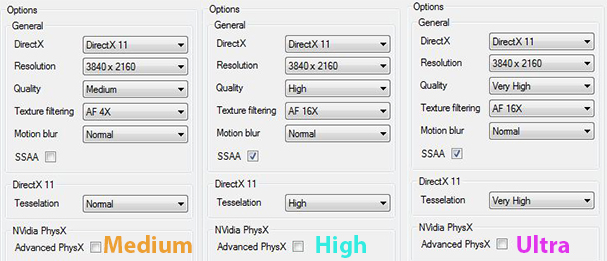
Last Light - Dual R9 Fury X Vs. Dual Titan X.
Get the Flash Player to see this player.
An intriguing discrepancy unearthed by the video are the subtle shadows during the Fury’s medium and high quality loops at 2:16 and 5:26 that appear to be absent in its ultra run at 8:35, but that the Titan X retains.
Vociferous debate regarding the image clarity delivered by both GPUs under synchronised conditions was manifest from the moment reviews were published and screen grabs began trickling onto forums.
Many insisted specific textures to blurred, lines poorly defined and filtering less consistent on Maxwell powered cards leading to accusations that Nvidia were cutting corners to compete.
In light of the above evidence, an ironic explanation for these discrepancies and in this instance, the Fiji’s significant advantage, may well have been down to its failure to indefinitely apply certain enhancements, the picture on the right does indeed at moments appear crisper and to possess greater contrast though if true, the reasons for such omissions would remain wildly speculative.
Emerald acolytes would claim they were a conic symptom of the Fury’s insufficient memory, Redbeard’s ruffians would cite nascent and bug riddled drivers as the root cause.
But before anyone considers it was I who neglected to ensure both tests were uniformly configured, I reran them for the duration it took to me to locate a coherent classical playlist on Apple Music …with identical consequences.
Project Cars
Aside from Space invaders, Pacman, Donkey Kong and Asteroids a half decent driving game was one of the earliest dangers to any peanut popper whose casual coinage had eluded the infamous penny falls, though in the technologically charged 2010s, this prolific genre had reached something of a plateau.
The reasons were simple. No matter how forcefully any passionate petrol-head might claim f1 and Nascar to be light years apart, or cite Le Mans as the toughest test of a racer’s craft and courage, every form of track based motorsport is governed by the same basic principals and the demand for authentic simulations places strictures on artists and programmers where designers of RPG’s and prime person pillage fests are encouraged to be radical.
Cars - Dual R9 Fury X Vs. Dual Titan X.
Get the Flash Player to see this player.
The Need for Speed and Gran Tourisms franchises yielded a handful of welcome exceptions, though the latter was console bound while both frequently abandoned convention by virtue of sumptuous and entirely fictitious street circuits.
In 1992, Micoprose’s legendary Formula 1 Grand Prix tempted me to pilot a cluster of crude polygons around what could be politely described as a Picasso inspired paraphrase of Silverstone’s sweeping chicanes, but such was the attention to physical realism, technical detail and playability that I and every other armchair qualifier worth their rubber was content to forsake aesthetic appeal and spend the next two decades watching surfaces sprout textures, billboards become legible, windscreens more reflective, grandstands fill up with discernible spectators and pit crews develop working limbs.
Thus it was that virtual racing’s slow and steady evolution habitually favoured refinement over invention and here, some 23 years after Geoff Crammond’s masterpiece, we examine what was claimed to be a flawless fusion of every fundamental that separated a figurative also-ran from a proverbial pole-sitter, say hello to Project Cars.
Though the game possessed no integral facility to assess performance, it did allow every tactile twitch of your tires to be faithfully preserved for subsequent bragging rights or in my case, palpable humiliation. As a non-driver my technique leaves more to be desired than that of a smashed sloth on segue and is further undermined by an aversion to patient learning.
Rev up, lights turn green, hit the gas, wheels spin and squeal as the entire field sails past into a dusty horizon. Stab the throttle again. Stutter off the grid. Pedal to the metal and gain on the pack with alarming speed before realising you’ve reached the first hairpin. Collide with three cars as you attempt to use them as steering aids. Falter clumsily over a kerb, receive a random penalty you’re too incensed to register. Swear. Re-join the track in last place. Accelerate once more. Approach the next corner. Assume its as tight as the first, lift right off only to discover its virtually straight. Loose more ground. Curse again. Abandon caution and floor it.
Catch two back-markers at an ugly left hander. Snatch at the breaks. Power slide into a fourth car, cut another corner, endure a second penalty. Tear across the start line and begin a fresh lap convinced you’ll improve. Instantly forget about the opening chicane and perform a graceful 360 into the barriers, accompanied by a third and utterly futile penalty.
I must apologize for such a lamentable basis by which to asses heavenly hardware. At least its accurate.
The Witcher 3 – Wild Hunt
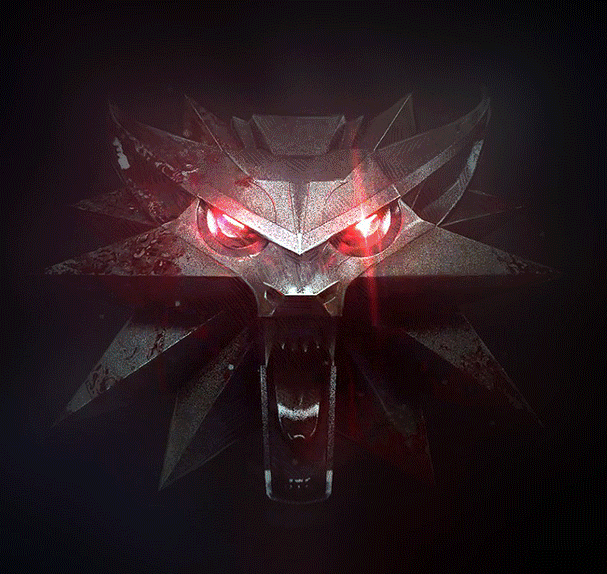
The Rhyme of the Ancient Role Player.
Serene sunsets, star laced skies,
gloomy forests foster evil eyes.
Gleaming broad swords, glowing armour,
axes, arrows, blood-stained drama.
Wrathful Warlords, wicked wizards,
darkened caves hide giant lizards.
Fearless warriors stand close at hand
to drive terror and tyranny from the land.
Yet.
Should ire and avarice lead honour astray,
chaotic kings their hearts obey.
Women, children, skin and bone,
steel blades carve souls of stone.
If not Skyrim that we doth preach,
which RPG must we beseech?
Luminous lakes join rolling rivers,
rejoicing in storms that make you shiver.
Wolves await on windswept heaths
neath flora thicker than royal wreaths
to foil your journey by firelight
to a distant town in the dead of the night.
Seek shelter at its humble inn
till dawn, when new quests will begin.
Weapons, relics, spells and gold
from foes whose fates remain untold.
Crypts and castles lined with jewels
under guard of ghastly ghosts and ghouls.
And what sin to not compound such treasures
with those offered by love’s sweet pleasures.
Once destiny forces mankind to cry,
no silver tongue can spin a lie.
An X shall mark the silicon key
to weather the Wild Witcher 3.
Whom do you get if you take Vincent Price’s villainous Witch Finder general, add a soul tinged with benevolence, luminous locks of glimmering grey flowing in the gloaming, claymore skills to stun William Wallace and a lust to maim monsters, fracture feudality, and deliver damsels and innocents from unspeakable devastation…assuming he’s followed the righteous path?
The Witcher 3 - Dual R9 Fury X Vs. Dual Titan X.
Get the Flash Player to see this player.Got it? Of course. Frank Finlay’s legendary Witchsmeller Pursuivant…or…if his sniffing schedule is exceptionally witchy, another curious fictional creation whom forums of infatuated fantasists refer to as “Geralt: The Witcher”.
Its initial chapter having appeared in 2008, this profitable game franchise is based on a cycle of fantasy novels by polish author Andrzej Sapkowski and frequently touted as a technically and materially superior alternative to the Elder Scrolls Saga, despite its mechanics, plot and characters having considerably more in common with those of Assassins’ Creed, which I haven’t indulged in since Ubisoft cut the cord on the “concessionary” copy that accompanied an Antec power supply I acquired back in the in the balmy summer of 2010.
As is inevitable when confronted with any role play romp requiring defter digits than the pedestrian point n click pleasantries of my youth, the challenge is never to triumph, but to perish with passable dignity. To avoid abusing the quick save key, or succumbing to a drunken beggar brandishing a broken lock pick. To escape drowning in a single foot of water, before becoming a lowly mud crab’s main course.
To complete a side quest ridden with the perils of mushroom picking and be rewarded with a spell that unlocks the door to my own roofless house. To snaffle enough tarnished silver to haggle hemp sack, a rusty fruit knife, then bribe my way out of jail for chancing to steel a flask of stagnant mead. And that colleagues, in a knobbly nutshell, conveys my competence as a Dungeoneer. AD&D plus this jaded journeyman equals “Absolutely dead and deader”.
Yes, I’m well aware Mud crabs belong in Elder Scrolls and that you wouldn’t class Assassin’s Creed as AD&D. Your’re right, Desmond is as different from Geralt as genetically forged French Fries are to Walter Raleigh’s par boiled Maris pipers.
Worse still, my memory has faltered. It was Assassin’s Creed 2, not 1, and had come bundled with selected Intel Processors as part of some impulsive joint promotion. I’d ordered a i7-980x expecting a complementary DVD and instead received a flimsy coupon with a URL two yards long printed in characters small enough to make a Sparrowhawk squint.
Typing it in correctly (following several attempts) had presented me with a pointless form that I completed in the best of faith, only for the page to time out when I clicked to submit, which made so angry that I’d sentenced the voucher to bookmark a toilet imprisoned issue of PC Format from the early 90s and thereafter, had promptly cast it to the depths of my sub-concious…until last week, when a seasonal shedding of life’s laundry saw it inadvertently flutter to the floor, causing me to exclaim, “oh!”, stoop to retrieve it, trip over to the tower whose keys I now command, ponderously punch in the URL onw final time and watch with resignation as Chrome drew a big fat blank.
All of which brings us neatly to where we left off and compels me to admit that I haven’t ever actually played Assassin’s Creed 1, 2, 3 or 4 and thus, am utterly clueless over how similar or different they are from The Witcher Trilogy, of which in turn, I have only played the 60 second segment you observe in these videos. Yes, I accept I dabble in subjects that I am ill-disposed to dig deep. You’re right, this entire detour had been a trivial waste of time and my constant wandering off on ever more tenuous tangents is simply an excuse not to elaborate on the kaleidoscopic fountains of knowledge discreetly dividing these paragraphs, because to do so would be to deprive them of their purpose, and render an evening of excel exactitude irrelevant. So, fancy another?
One thing is beyond dispute, every chapter of the Witcher was a delectable demonstration of the technology it utilized. Hyper resolution textures, advanced HDR, sophisticated atmospheric effects and in this, the third episode, Nvidia’s revolutionary “hair works”. A specialized routine intended to enhance the definition and realism of human hair and animal fur.
Where previously, a statuesque Amazon’s fiery mane might have waved uniformly in the breeze much like a flag, or a savage grizzly’s glossy coat would resemble a snake’s skin, inseparable from its owner’s movements and set in stone amidst a howling gale, hair works break both into visible strands with naturalistic randomized motion.
The technique was lauded and reviled with reflective vigour owing to what many concluded were derisory benefits in light of the brutal the penalty it incurred, as well as it allegedly skewing results in Nvidia’s favour.
Settings pertaining to the feature differed depending on the user’s adapter of choice, making a true aubergines to aubergines comparison impossible to achieve unless it was completely disabled.
Nvidia cards initiated only one applicable variable entitled “nvidia hair works”, this was listed under the “graphics” sub-menu and provided options to either to forgo follicular finesse , make it Geralt’s exclusive privilege, or unburden every man woman and beast of their pedal bin toupee. AMD GPUs unearthed an additional field headed “Nvidia Hairworks AA” with selectable values of, x2, x4 and x8.
Built-in presets of “low”, “medium”, high and “ultra” automatically governed the status of both these variables.
In practice, the discrepancy I observed when activating and disabling this advanced form of tessellation was far less pronounced than reported elsewhere. One respectable source compared an r9 390x to a GTX 970 and found the former to be over 20% slower at 1080p “ultra”, the same profile I used for the “fury”, which applies hair works universally and forces “Nvidia AA” to 4x.
The only issue I encountered was a difficulty in engaging crossfire at 2160p. Initially, frame rates at this resolution barely exceeded those when running with a single GPU, suggesting a defective template or tardy support, a curious anomaly in light of there being no such issue at 1080 or 1440p.
After updating the catalyst drivers to version 15.7, the fury’s maiden WHQL certified package – and installing the game’s latest patch*, this problem was resolved and the bonus bestowed by crossfire was greatly augmented. All tests were subsequently re-run to ensure consistency.
Even a die hard data-phobe would encounter little difficulty deciphering these charts, but to burnt- out stock brokers who find the mere glimpse of glowing bars evokes mortal terror, first, well done for making it this far and as a solace, imagine a photo finish closer than when seven hundred line dancing cheetahs took part in a synchronised sprint.
The Fury’s tall but tight quota of RAM once again proved of no hindrance irrespective of quality and dimensions. Stuttering was apparent with both cards when operating in pairs, but in no way disruptive to gameplay, though fluidity was evidently more impressive on those little red machines, an assertion backed up by notably elevated minimum frame rates.
An explanation of how the Fury was able to compensate for its keenly debated shortcomings might well have lain in the swapping routines implemented by the its drivers, which many claimed set a lofty precedent for their aggressive exploitation of system memory as soon as their target’s resources had been expended, leading to speculation that AMD would attempt revolutionise the very concept of driver development by optimizing their future releases for individual applications.
Regardless of all such outlandish theories, The Fiji was a marvel held hostage by it’s founder’s hyperbole for the duration of what could have been a heavenly honeymoon. A ground-breaking design executed with fearless conviction and alluring finesse that would have amassed plaudits and bouquets from across the great graphical divide were it not for an overly bullish promotion at the annual E3 exhibition and a slew of rose-tinted statistics forming part of a controversial “reviewers guide”, which materialised days prior to the product’s launch.
A tad harsh? We were after all sold the Fury as an “over-clockers dream”, given advanced insight into its aptitude at ultra HD with a tantalizing showcase of “Tomb Rader” topping 60 fps. We led to believe through craftily coordinated publicity that it possessed the pedigree not only to displace the product it was allegedly created to compete against, and but also topple the tallest Titan under Green Eye’s tyrannical command.
Was this really a case of devious deception or one two many tech sites assuming swift news is preferable to hard facts and taking selective but ultimately honest statements wildly out of context.
“Fiji is the fastest GPU ever built”. Asserted a triumphant Lisa Su. A bare faced lie, had that been what she’d actually said., though the true quote was.
“Fiji is the fastest GPU AMD has ever built”. Wholly accurate, but hardly rabble rousing.
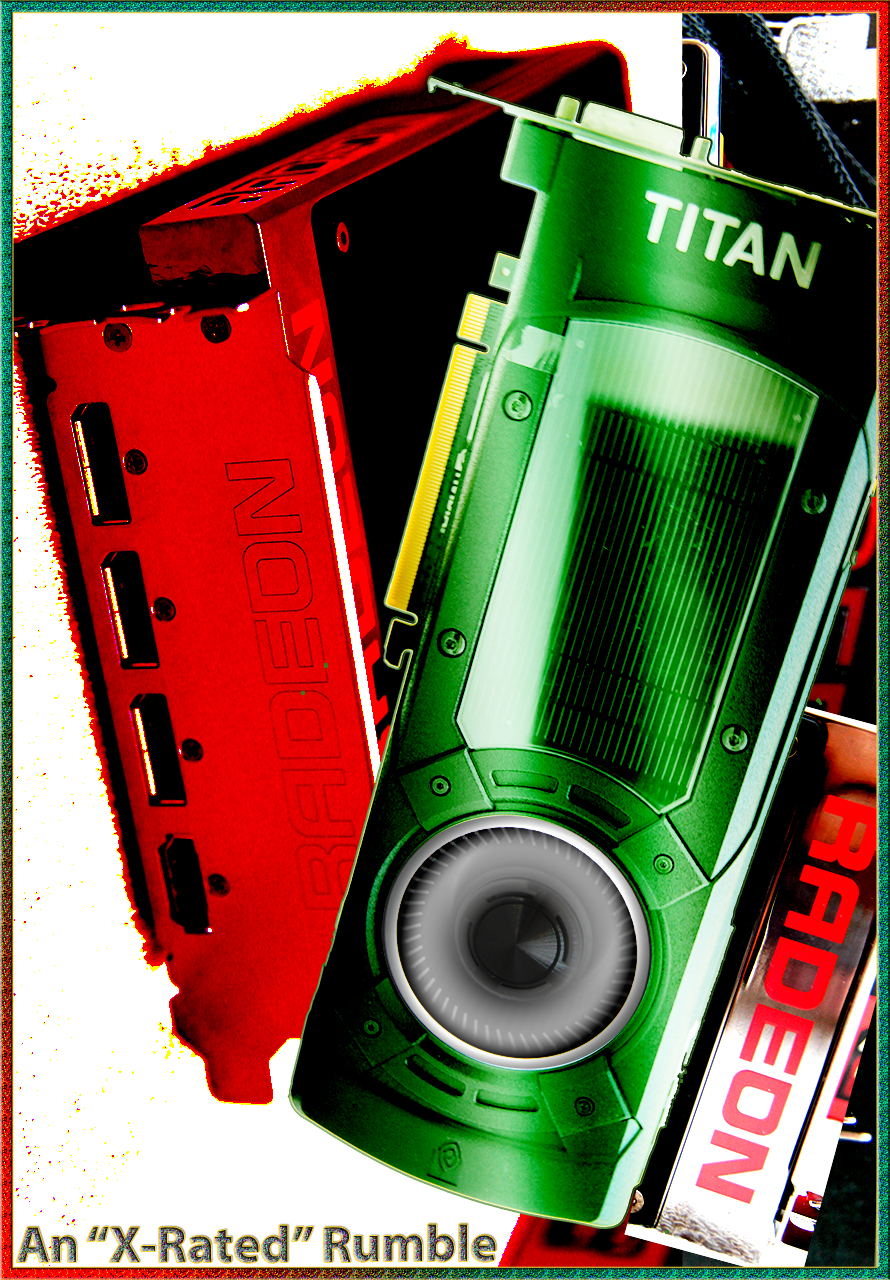
Whilst one could argue that this intriguing enigma’s eternally drawn out release and initially sparce availability did nothing to ingratiate AMD with a feverishly stoked fan base, I cannot help but conclude that had it not been for flocks of enraged and entranced fanboys taking irrational liberties in defence of their chosen empire, wiser scholars of pixel warfare would have been free to appreciate this compact, innovative and exceptionally powerful creation for its numerous merits.
Cast another caustic eye over these results. Did any impartial pixaholic really expect more than for it hang fire with a Titan X for two thirds of the price?
Are you not be prepared to be merciful and overlook the limited over-clocking, lack of HDMI 2.0 or, wait, do you hear something? What’s that noise? Waiter! Waiter! There’s a mosquito in my pump…. and it sounds like he’s break testing a jet ski.





